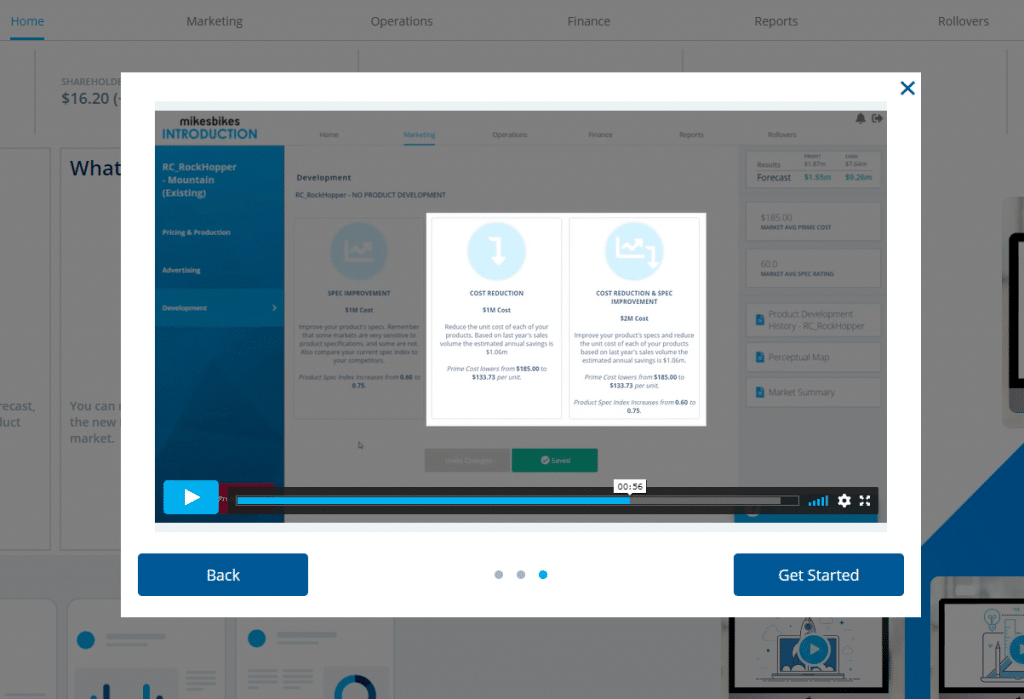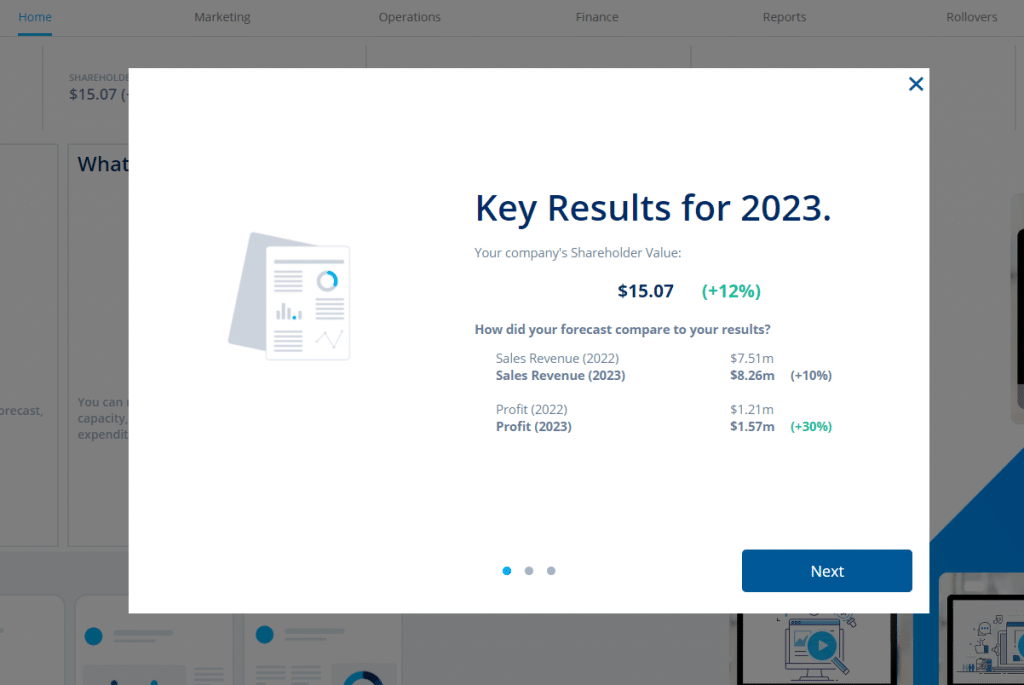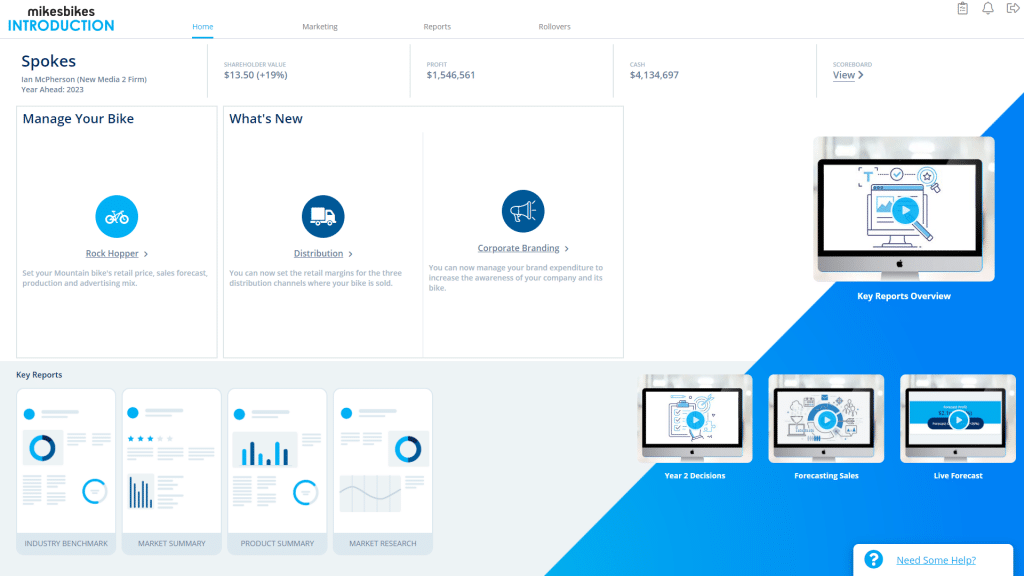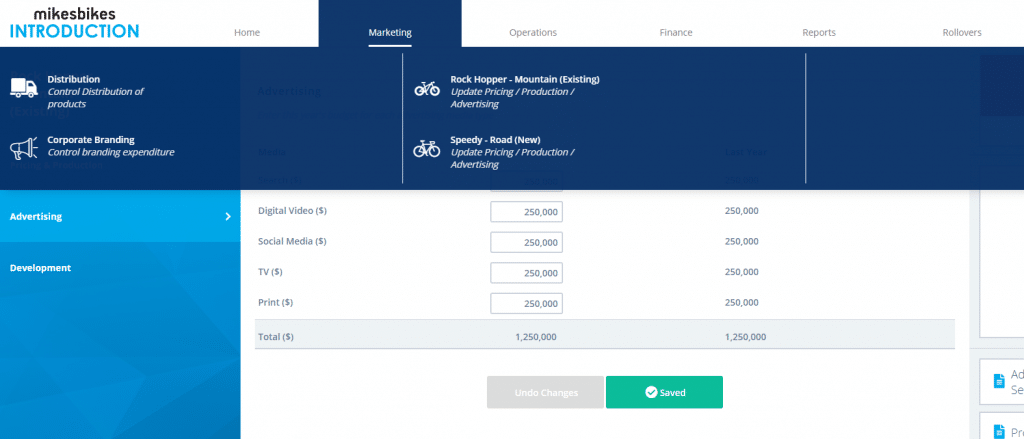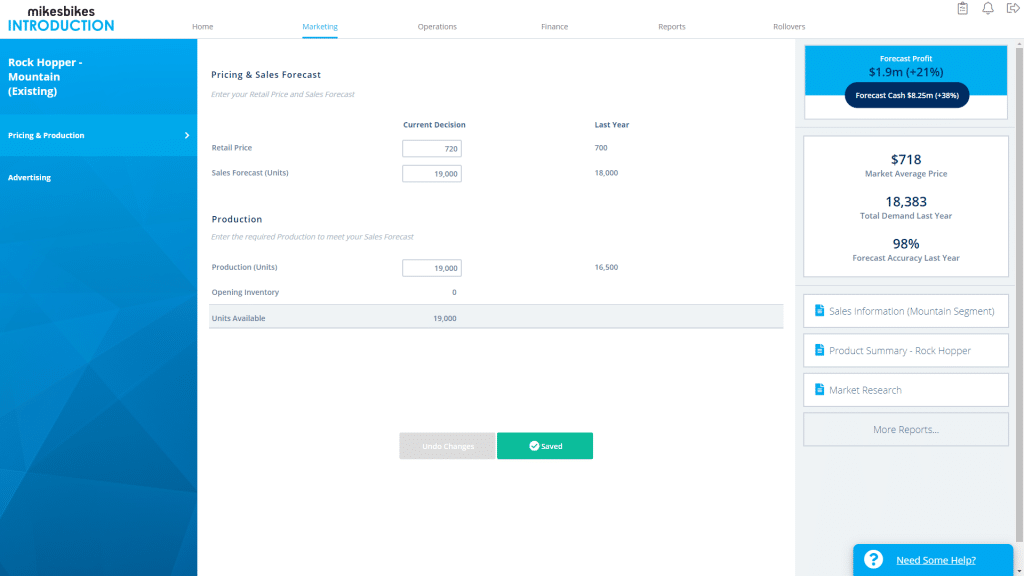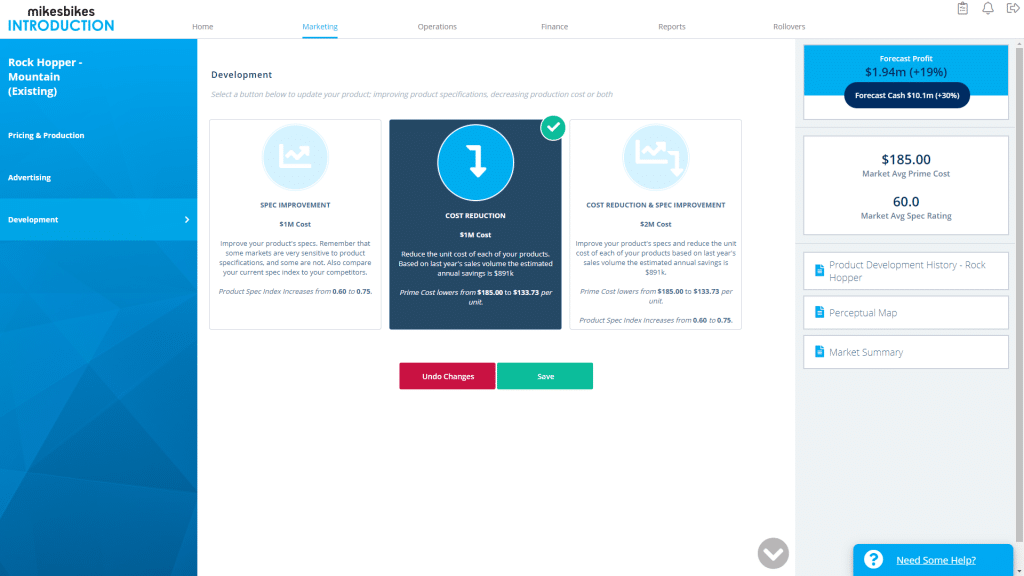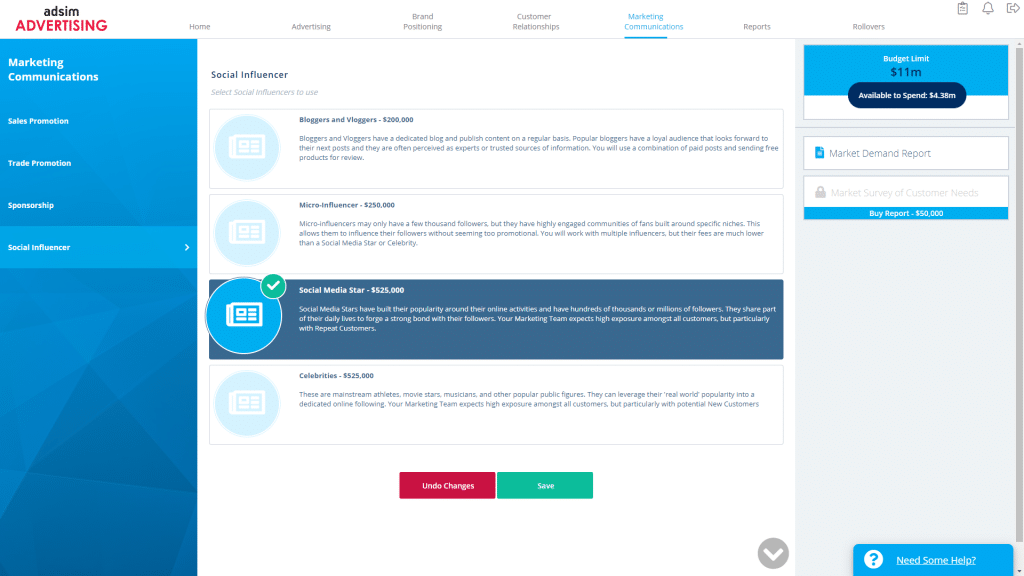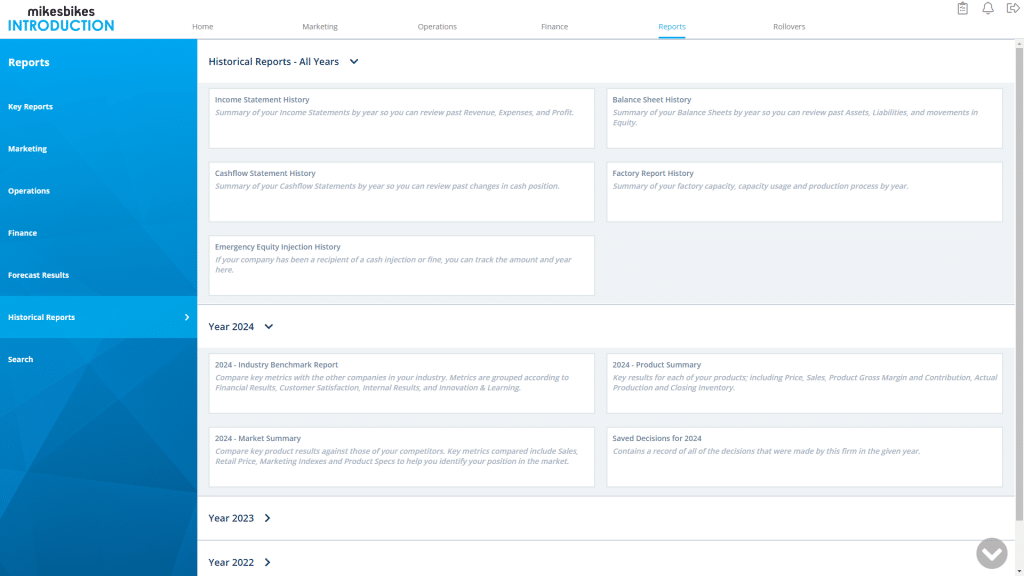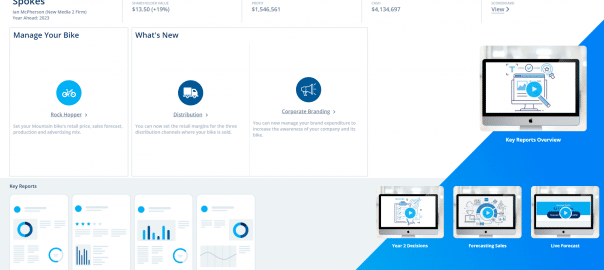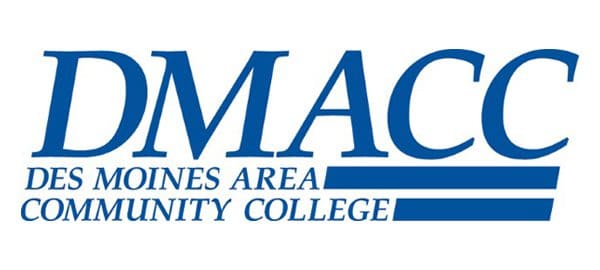The MikesBikes simulation has been extremely well received by students. Many enjoy the opportunity to work in groups and learn from others, while nearly all love the ability to apply what they are learning in a safe environment.
Lisa Parrott from the University of Saint Mary uses the MikesBikes Advanced Business Simulation in her online Strategic Management and Ethics course.
Lisa has kindly shared how MikesBikes is used at USM and provided tips to others implementing a business simulation in an online course.
Introducing the Simulation & Single-Player Phase
Week 1
Students are introduced to the Single-Player (practice phase) in the first week. They are also required to read the player’s manual and watch the tutorial videos.
To ensure they have completed these tasks they take a 20-question introductory quiz where they must achieve at least 80% to pass. They are given three opportunities to obtain a passing grade, otherwise they must work with the instructor to determine if they can continue in the course. It is critical students understand how to participate in the simulation before they are put into a team environment.
Students are also asked a brief strategy questionnaire to help the instructor formulate groups.
Finally, students are asked to translate their learning into an individual analysis that looks at the lessons learned, elements of the simulation that are still unclear, and reports used to evaluate performance.
Multi-Player Phase and Assessments
Week 2
The second week moves students from the individual experience into teams. Teams are free to use any means to work virtually; Google Hangouts, Zoom, Facetime, etc.
Students first complete a team contract to establish methods of communication, meeting frequency, workload, steps for resolving conflict, and deadlines.
Before starting Multi-Player phase they create a strategic plan. This includes building a mission statement, vision, values, performance objectives, and a plan for weekly evaluation of results and decisions.
Week 3 to Week 6
Rollovers (decision deadlines) begin in week three, with two rollovers per week until week six.
Each week students conduct an individual analysis examining the decisions made by their team, explaining their performance using data from reports within the simulation and to apply the weekly learning objectives to their team performance. This presents a knowledge check at an individual level each week.
After Rollover 4 a consultation meeting is held between each team and their instructor. This provides teams the opportunity to discuss their strategic implementation and evaluate progress to determine if change is needed. Teams can also use this time to ask questions.
Week 7
Teams prepare a video presentation covering elements from their strategic plan, a SWOT analysis, best practices, analysis of overall performance, and recommendations for future directions of the company.
Week 8
The video presentation from week 7 provide the opportunity for students to see “behind the curtain” of the other companies. In response, they are required to evaluate the strategy of their competitors.
Students also complete an individual evaluation of the performance of each of their team members and how they will use skills learned in their next group experience.
The final assignment for the course asks students to write an individual analysis of the entire experience. They are asked to evaluate team performance, consider whether they would expand globally (and where) and reflect on the entire experience. The paper also addresses the ethical performance of their team, effectiveness of their strategy, and highlights three lessons learned. Students are asked to incorporate scholarly articles into this assignment to support their assessment.
Tips for using a business simulation in an online course:
- The first few weeks are often more time consuming than normal, and it may require multiple reminders to read the manual and watch the videos!
- When introducing the simulation, it is best to focus on one area of development at a time, and build on concepts each week. Students get overwhelmed in the first few weeks using a simulation, especially if this is their first experience. As they become more familiar with how their decisions impact multiple elements of the business they will begin developing more complicated analysis of their performance.
- Team design is extremely valuable for a successful Multi-Player experience. Too many risk adverse students will create problems with overall performance and this should be avoided.
- The ideal team size is three. Two will often result in group-think and passive agreement, four often yields social loafing by at least one member who may not feel they have a voice. With three there is a tie breaker for any decisions when the team is split on how to move forward.
- The more students know how to read the reports available to evaluate the effectiveness of their decisions, the better their team will perform and often understand how different areas are connected.
- Each team will develop at a different pace, be sure to push them forward based on their unique needs. Some may reach a higher level of understanding faster than others.
View the course syllabus: Strategic Management and Ethics Syllabus
Related Articles:

